The electric vehicle (EV) market has experienced an unprecedented surge over the past decade, transforming from a niche segment to a mainstream automotive revolution. What was once considered a futuristic curiosity has become a viable, practical choice for millions of drivers worldwide.
This shift is driven by a confluence of factors—rising environmental awareness, tightening emissions regulations, government incentives, and rapid advances in battery technology.
Consequently, consumers now have a broad spectrum of electric vehicles to choose from, ranging from affordable compacts to high-end luxury models. However, with new EVs flooding the market, the dynamics of the used EV market have become increasingly complex and fascinating.
One of the most critical considerations for prospective EV buyers—new or used—is value retention. Unlike traditional internal combustion engine (ICE) vehicles, where depreciation patterns are well understood and relatively stable, EV depreciation can be volatile and heavily influenced by factors unique to electric mobility.
Battery degradation, evolving charging standards, software updates, government policies, and brand perception all play pivotal roles in determining how much value a used EV retains over time.
Some models have demonstrated impressive resilience, maintaining strong resale values years after their initial purchase, while others have plummeted in worth, sometimes losing over half their value in just a few years.
Understanding these trends is essential not only for savvy buyers but also for those considering the long-term costs and benefits of electric vehicle ownership. The growing diversity of EVs on the road today presents both opportunities and challenges.
On one hand, the market offers unprecedented choices—from the tech-dominant Tesla lineup to mainstream offerings like the Chevrolet Bolt, to luxury contenders such as the Porsche Taycan. On the other hand, the pace of innovation means that yesterday’s cutting-edge technology can quickly become obsolete.
Vehicles that were groundbreaking five years ago might struggle to compete against newer models boasting longer ranges, faster charging, and more advanced driver-assistance systems. This rapid evolution impacts used car values, creating a distinct divide between EVs that hold their value well and those that depreciate like rocks.
This article explores that divide in detail. We’ll begin by highlighting five used EVs that have shown strong value retention—vehicles that continue to command respect and demand in the secondary market.
These models typically combine solid range, advanced technology, brand strength, and practical usability, allowing them to defy the typical steep depreciation curve associated with electric vehicles.
On the flip side, we’ll also examine five used EVs that have struggled with value retention, delving into the reasons behind their steep depreciation. These models often suffer from limited range, outdated technology, weak brand support, or design compromises that make them less appealing as used purchases.
For anyone interested in buying or selling a used EV, understanding these trends can make a world of difference. Whether you’re a budget-conscious commuter looking for the best bang for your buck or a luxury buyer hunting for an electric performance machine that holds its value, knowing which models retain value—and why—can save you thousands of dollars in the long run.
As the EV market matures, these insights will become even more crucial in navigating an increasingly complex landscape. Join us as we dive into the contrasting fates of these electric vehicles, offering a comprehensive look at what drives value retention in the world of used EVs—and which models you might want to avoid if you’re looking for a smart, long-term investment.
Also Read: 5 Cars With Smart Alarms That Actually Work and 5 That Never Go Off
5 Used EVs With Strong Value Retention

1. Tesla Model 3
The Tesla Model 3 remains a standout in the EV world, not only for its initial sales figures but also for its uncanny ability to hold onto value. While many EVs depreciate sharply within the first few years, the Model 3 bucks that trend. Several years after launch, lightly used Model 3s still command high resale prices, often just a few thousand dollars below their original sticker price.
Part of this is due to the brand’s massive popularity and cult-like following. Tesla’s sleek design language, minimalist interiors, and forward-thinking technology make the Model 3 feel like the future, even years after purchase.
One of Tesla’s most powerful tools in keeping the Model 3 relevant is its frequent over-the-air (OTA) updates. Unlike traditional automakers that require hardware refreshes to upgrade features, Tesla uses software to improve vehicle performance, refine interfaces, and add features long after the vehicle leaves the lot.
This means a three-year-old Model 3 might have similar capabilities to a new one, keeping older units fresh and desirable in the used market. This innovation cycle contributes directly to higher residual values and more consumer confidence.
In addition, Tesla’s charging infrastructure plays a significant role. The proprietary Supercharger network remains a major advantage, especially for buyers who want to take their EV on road trips. No other EV manufacturer has built such an extensive, fast, and user-friendly charging ecosystem.
Used buyers often feel more comfortable purchasing a Tesla knowing they’ll have access to a reliable, nationwide charging network, making the vehicle more versatile and less range-restrictive than competitors.
Moreover, the Model 3 benefits from a relatively high production quality compared to earlier Tesla models, especially after 2020, when quality control issues were reportedly addressed more thoroughly.
Combined with strong performance metrics, such as quick acceleration and impressive handling, the Model 3 appeals to both tech-savvy drivers and driving enthusiasts. Its design and driving dynamics keep it competitive, even as new EVs flood the market, reinforcing its status as a value-retaining used vehicle.
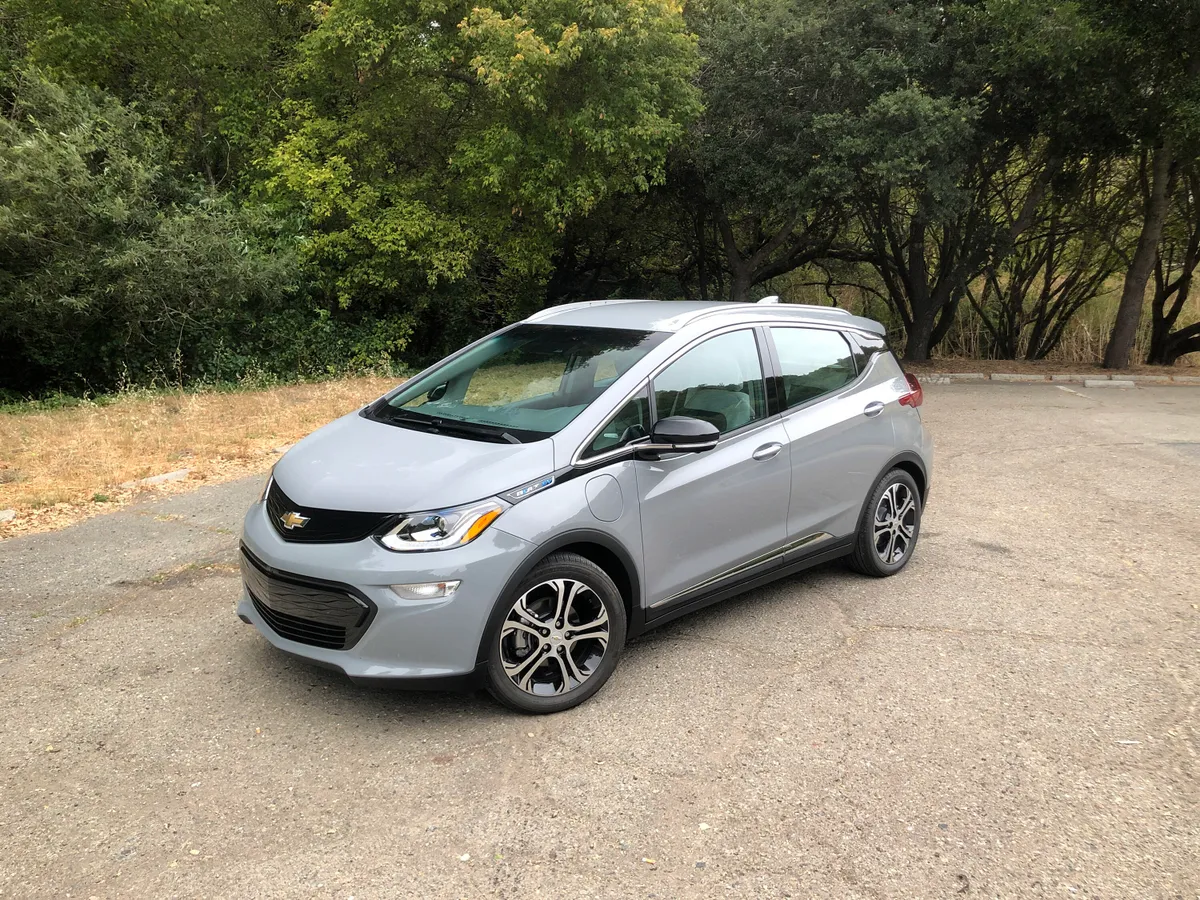
2. Chevrolet Bolt EV (Post-2020)
The Chevrolet Bolt EV is one of the most affordable long-range electric vehicles available, and that affordability doesn’t translate into excessive depreciation like one might expect.
In fact, post-2020 models of the Bolt have held up quite well in the used market, especially after the battery recall campaig, where GM replaced thousands of battery packs with brand-new units. In effect, this gave many used Bolts a second life, extending their usability by several years and giving buyers confidence in battery reliability.
A key reason for the Bolt’s strong resale performance is its practical value proposition. With an EPA-estimated 259 miles of range and a hatchback body style, the Bolt functions as an excellent commuter car, family runabout, or delivery vehicle.
Its affordability compared to other EVs makes it especially attractive in the used market, where many buyers are looking for cost-effective alternatives to increasingly expensive new EVs. The Bolt’s utility, compact size, and low operating costs make it a favorite among budget-minded buyers.
The simplicity of the Bolt also works in its favor. It’s not a flashy vehicle, but it’s reliable, straightforward, and unpretentious. Unlike many EVs that chase gimmicky interiors or unnecessary luxury, the Bolt offers a no-nonsense cabin that ages relatively well.
For those prioritizing function over form, the Bolt stands out. And since it shares parts and service support with other GM products, it’s less intimidating for secondhand owners who might be venturing into EV ownership for the first time.
Furthermore, Chevy’s long-term commitment to electrification and its announcement of future Bolt versions continue to keep the nameplate in public conversation.
As a result, the Bolt EV enjoys better brand recognition than many competitors in the budget EV space. Used buyers looking for a known quantity with a relatively safe ownership experience are naturally drawn to the Bolt, keeping demand high and depreciation in check.

3. Porsche Taycan
The Porsche Taycan defies the conventional wisdom that luxury cars depreciate rapidly—especially when electric. Since its debut, the Taycan has maintained strong resale value, helped in large part by Porsche’s reputation for engineering excellence, performance, and exclusivity.
For buyers in the high-end EV space, Porsche offers something unique: a luxury vehicle with sports car credentials and genuine track performance, all while being fully electric.
One of the Taycan’s biggest selling points in the used market is its driving experience. While many EVs are competent in straight-line acceleration, the Taycan brings a level of handling and precision typically reserved for internal combustion sports cars.
Porsche’s proprietary 800-volt architecture allows for incredibly fast charging and consistent performance, even under heavy loads. For enthusiasts, these features make a used Taycan nearly as attractive as a brand-new one, thereby helping it retain its value.
Build quality also plays a critical role in the Taycan’s desirability. The interior is unmistakably premium, with top-tier materials, sharp design, and thoughtful ergonomics.
Even after a few years of use, the cabin feels luxurious and modern. Additionally, Porsche’s restraint in making radical year-over-year changes gives used buyers peace of mind that their Taycan won’t look outdated or under-equipped compared to a newer version.
Supply and demand also favor the Taycan’s resale health. Limited production numbers and high demand—especially in markets with strong EV infrastructure—help bolster used prices. The Taycan is not mass-produced like Teslas or Nissan Leafs, and its rarity adds to its cachet.
Combined with consistent support from Porsche dealerships and software updates, the Taycan enjoys a kind of second-hand prestige that few luxury EVs can claim. It remains a top-tier option for those seeking luxury and performance in a used EV.
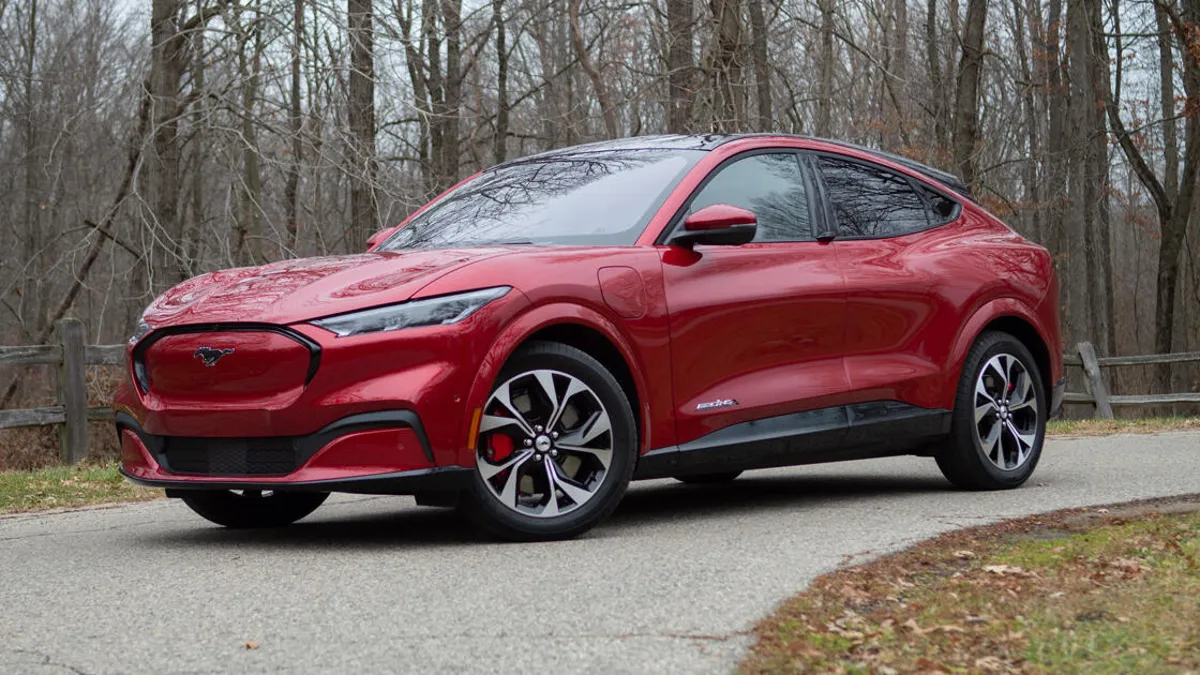
4. Ford Mustang Mach-E
Ford’s Mustang Mach-E surprised many when it debuted—not only because it carried the iconic Mustang name into the electric age but also because it delivered solid range, refined design, and everyday practicality.
Since launch, it has become one of the few non-Tesla EVs to genuinely gain traction in the resale market. While not immune to depreciation, the Mach-E holds its value significantly better than many of its direct competitors in the compact SUV segment.
Much of the Mach-E’s appeal lies in its design. By borrowing Mustang styling cues and combining them with the crossover form factor, Ford successfully created a vehicle that feels sporty without sacrificing practicality.
That balance appeals to a wide swath of used buyers—families, commuters, and even gearheads who appreciate the rear-wheel-drive dynamics of some variants. The car looks futuristic without being over-designed, and that restrained aesthetic gives it longer-lasting appeal.
Functionality is another area where the Mach-E excels. It offers competitive range (up to 300 miles in some trims), responsive performance, and a user-friendly infotainment system. Ford’s Sync 4A system, displayed on a large vertical touchscreen, is intuitive and fast, helping the Mach-E age well.
Over-the-air updates ensure the software stays fresh, which is a must in today’s rapidly evolving EV landscape. Combined with physical buttons for essential controls, the user experience strikes a balance between new tech and traditional usability.
Another factor bolstering the Mach-E’s used value is brand trust and dealership accessibility. Ford has invested heavily in EV training and infrastructure, meaning that servicing a Mach-E is far easier than servicing lesser-known or low-volume EVs.
This service ecosystem lowers the perceived risk for used buyers, especially those unfamiliar with EVs. The added benefit of federal tax incentives on new models does slightly affect used values, but demand remains strong enough to keep prices relatively firm.
Finally, Ford’s continued expansion of the Mach-E lineup, with new trims and performance options, keeps interest high in the entire model range.
Used buyers who can’t stretch to a new GT Performance Edition, for instance, often settle on a used Premium or California Route 1 trim, creating a robust secondary market. That demand keeps the Mach-E in the spotlight and supports its strong resale performance.
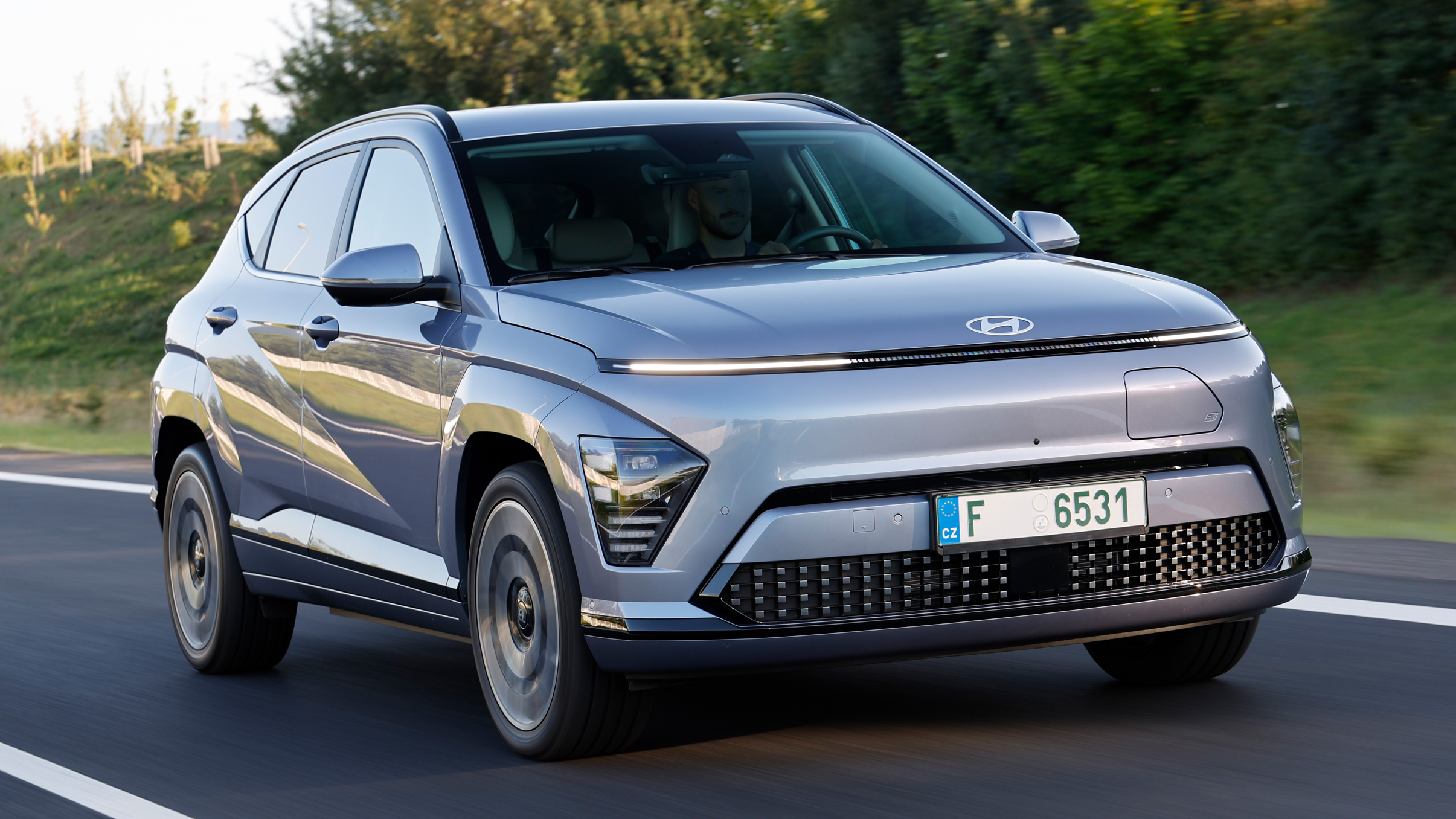
5. Hyundai Kona Electric
The Hyundai Kona Electric might not grab headlines like Tesla or Porsche, but it’s a quiet achiever when it comes to resale value. As one of the most affordable long-range EVs on the market, the Kona Electric has built a solid reputation for efficiency, reliability, and practicality.
These attributes translate into strong demand in the used market, especially among first-time EV buyers and those looking for a dependable commuter vehicle. One of the standout features of the Kona Electric is its range. With an EPA estimate of up to 258 miles, it offers nearly the same range as much more expensive EVs at a fraction of the cost.
That range is particularly impressive given the Kona’s compact footprint, which makes it a great option for city dwellers who also want to take occasional road trips. For used buyers, that level of flexibility is hugely appealing, especially in a sea of older EVs with far more limited range.
Hyundai’s generous warranty programs also boost confidence. The Kona Electric is backed by a 10-year/100,000-mile powertrain and battery warranty, and in many cases, that coverage is transferable to subsequent owners.
This reassurance dramatically reduces buyer anxiety around battery longevity—one of the biggest concerns in the used EV market. The brand’s growing reputation for reliability and low maintenance costs only adds to the Kona’s appeal.
Additionally, the Kona’s design has aged well. While not flashy, the interior is comfortable, functional, and well put together. Tech features like Apple CarPlay, Android Auto, and available adaptive cruise control give it modern conveniences without overwhelming complexity.
Unlike some EVs that have overly complicated interfaces or gimmicky designs, the Kona offers a familiar and intuitive driving experience. This makes it easier to recommend to a broader audience—further supporting strong resale values.
Finally, supply chain constraints and increasing demand for affordable EVs have helped prop up used Kona prices. As new EV prices rise and budget models become scarce, the Kona Electric has emerged as a go-to option for buyers who want solid performance without a hefty price tag. All these factors contribute to its exceptional value retention in the ever-evolving EV marketplace.
5 Used EVs That Drop Like Rocks
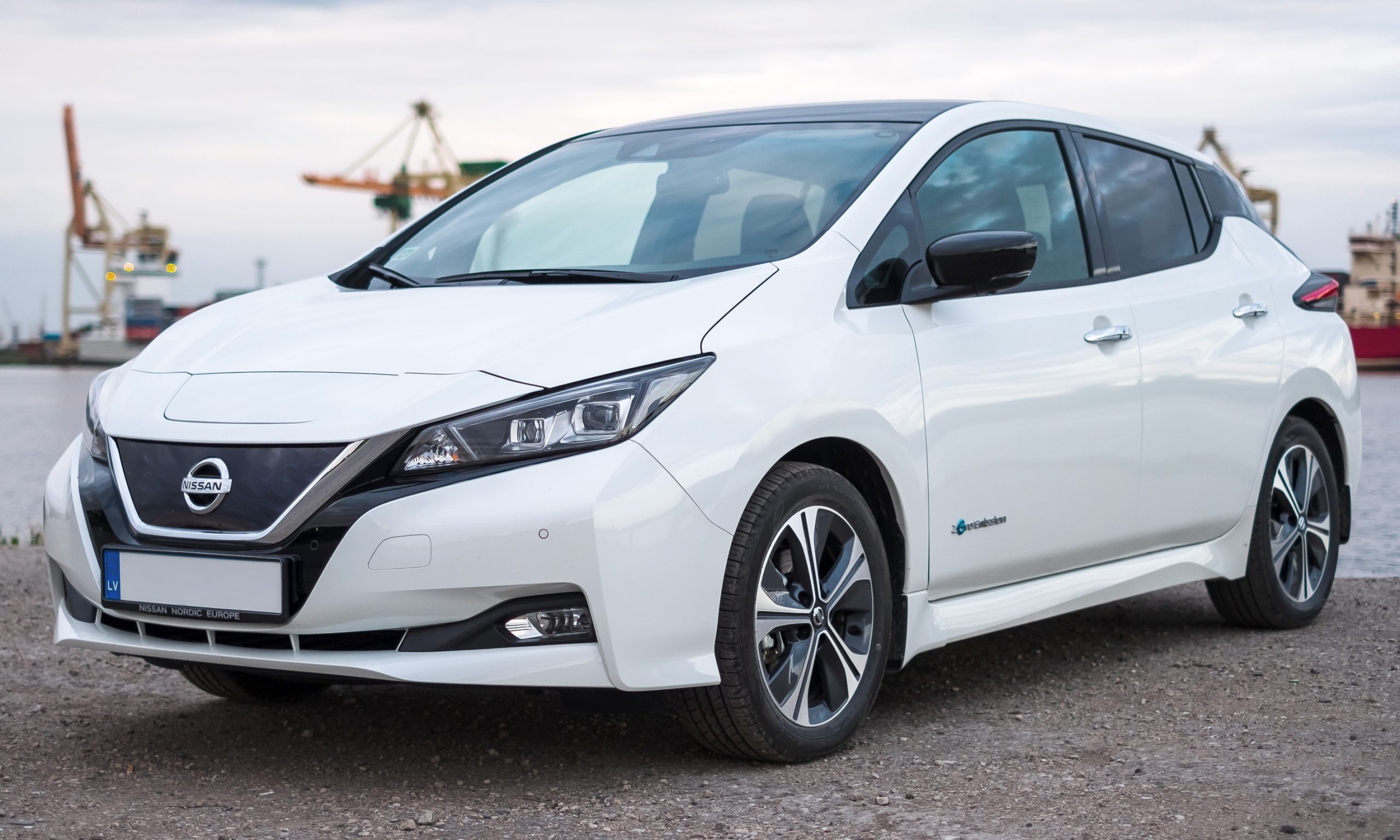
1. Nissan Leaf (Pre-2018 Models)
The Nissan Leaf deserves credit for being a trailblazer—it was one of the first widely available mass-market EVs. But unfortunately, early generations of the Leaf have become textbook examples of poor value retention. The main culprit is the car’s outdated battery technology.
Pre-2018 Leafs came with passive air-cooled batteries, which made them more susceptible to rapid degradation, especially in hotter climates. As a result, many older Leafs can no longer deliver even 70% of their original range, which in itself was only around 80 to 107 miles. In a used market that increasingly prioritizes range and reliability, this significantly narrows the car’s appeal.
Additionally, the Nissan Leaf uses the CHAdeMO fast-charging standard, which is rapidly becoming obsolete. While CHAdeMO was once the dominant quick-charging connector in North America, most new EVs now use the CCS or Tesla’s NACS standard.
This has effectively stranded many Leafs on an island with limited charging options, particularly as more public chargers drop support for CHAdeMO. Even used buyers who don’t need fast charging still view the car’s limited charging compatibility as a red flag, contributing further to its rapid depreciation.
Another factor hurting the Leaf is oversaturation in the used market. At one point, the Leaf was the go-to EV for government fleets and eco-minded consumers in states with strong EV incentives. This led to a flood of lease returns and secondhand units, many of which had been driven hard and maintained minimally.
With so many available, and with most showing signs of range decay, supply significantly exceeds demand. This imbalance pushes resale prices down, sometimes to the point where older Leafs can be found for less than $5,000.
Stylistically and technologically, early Leafs also haven’t aged well. Their interiors were already basic at launch, and the infotainment systems now feel completely outdated.
The lack of active safety features, limited trunk space, and underwhelming acceleration don’t help either. While newer Leaf models have improved range and design, the long shadow of the early generations continues to haunt the nameplate in the used EV market.
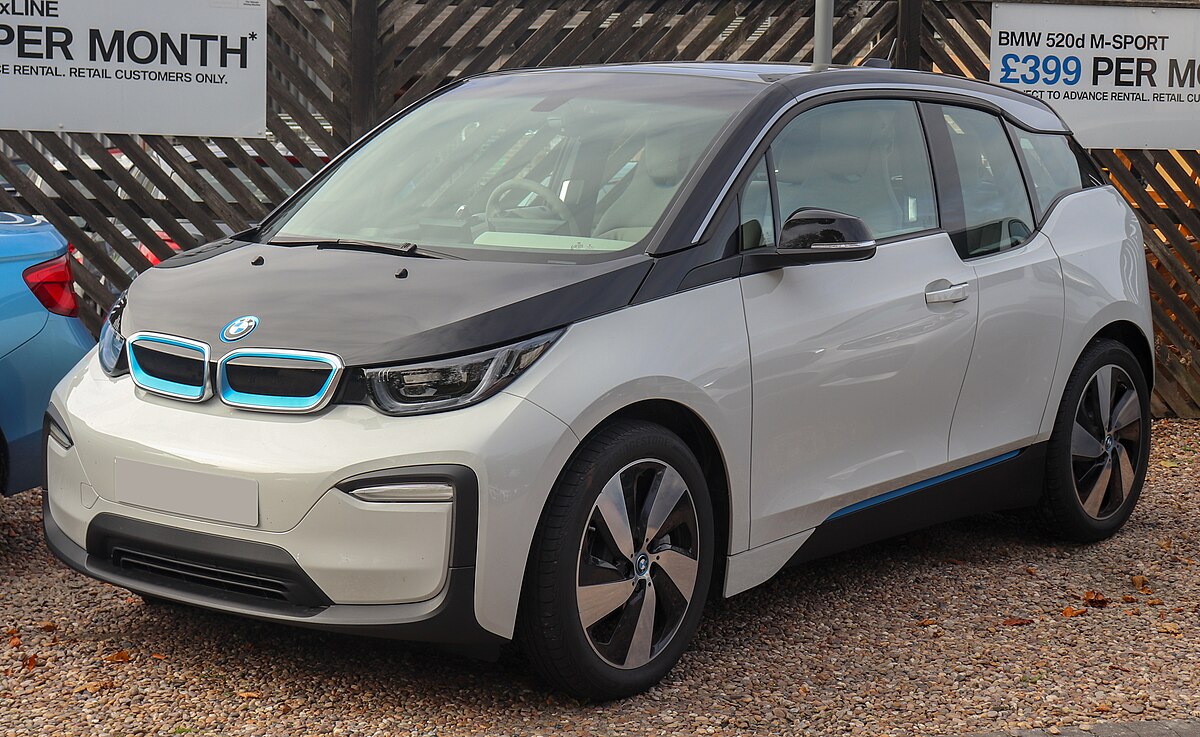
2. BMW i3
The BMW i3 is one of the more unique vehicles ever to enter the EV world. From its futuristic carbon-fiber reinforced body to its minimalistic, eco-themed interior, the i3 set out to be different—and it succeeded.
But in trying so hard to be distinctive, BMW created a car that aged quickly in a market that now values more conventional traits like range, cargo capacity, and crossover utility. As a result, the i3 has one of the steepest depreciation curves in the luxury EV segment, despite wearing the prestigious BMW badge.
One of the i3’s biggest weaknesses is its range. Early models offered just 81 miles per charge, and even the most recent versions maxed out at 153 miles. This might have been adequate in the early 2010s, but in today’s market, those numbers are considered outdated and impractical.
Although some trims offered a gas-powered range extender (known as the REx), this addition complicated ownership, raised service costs, and didn’t do much to restore buyer confidence in the vehicle’s core electric functionality. For many used buyers, that combination of short electric range and unconventional backup power is more of a liability than a perk.
Another major turnoff is the vehicle’s design and layout. The i3’s upright stance, narrow tires, and rear-hinged back doors (which require the front doors to be opened first) make it less practical for families or even day-to-day use.
The interior, while interesting in a design sense, uses non-traditional materials like recycled plastics and eucalyptus wood that have not aged as gracefully as leather and soft-touch plastics found in similarly priced vehicles. All these quirks reduce the car’s universal appeal in the used market, where buyers are typically less forgiving of impractical or oddball features.
The maintenance costs for the i3 are also unusually high, especially for an EV. Its specialized parts, unique platform, and limited production numbers make repairs expensive.
Add in BMW’s reputation for high out-of-warranty service costs, and many potential used buyers walk away. As a result, the i3 often sells for pennies on the dollar just a few years after purchase, and even well-maintained examples struggle to fetch strong resale prices.
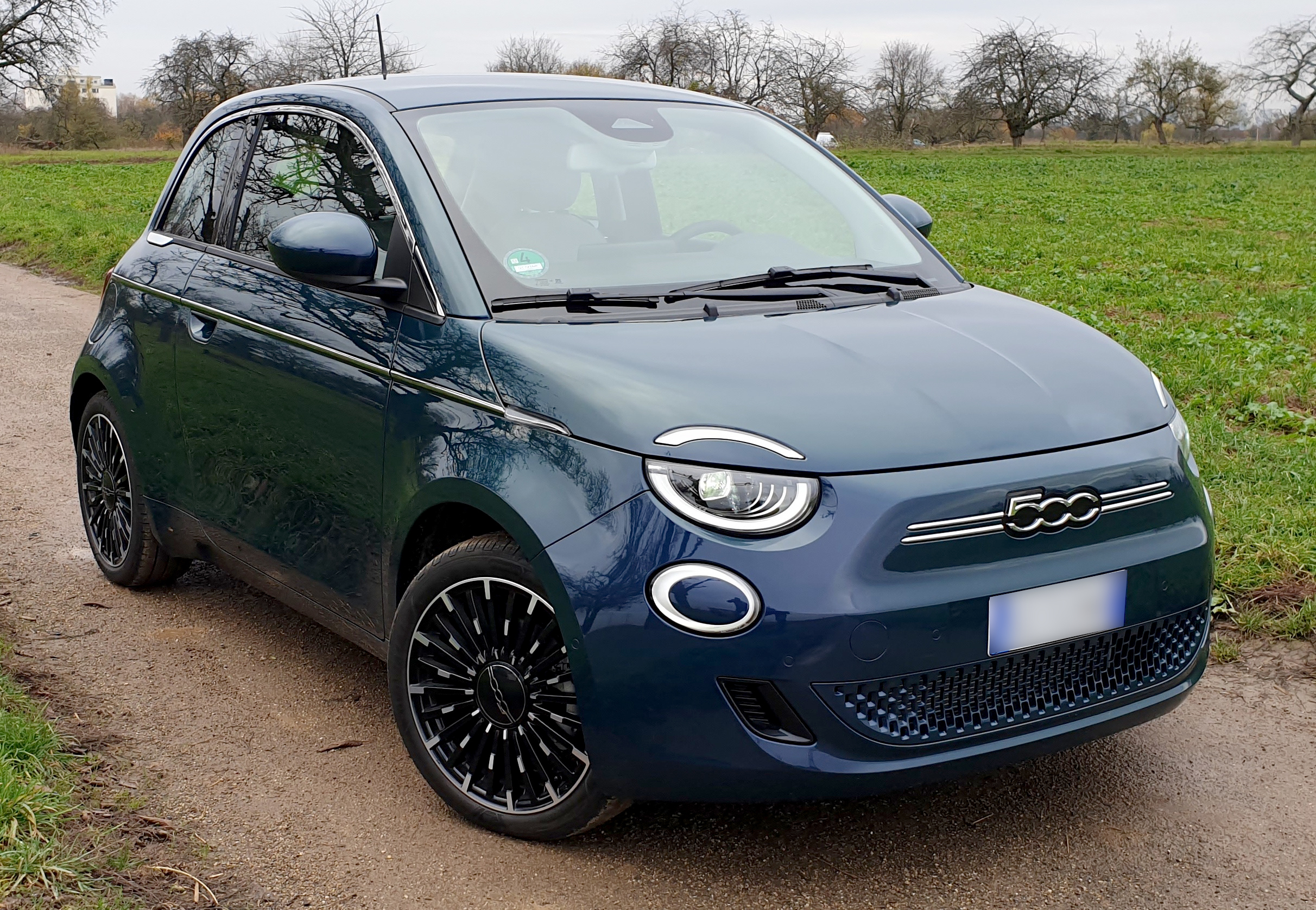
3. Fiat 500e
The Fiat 500e might win hearts with its quirky styling and city-friendly proportions, but that charm doesn’t translate into lasting value in the used market. Originally sold as a compliance car, the 500e was built primarily to satisfy California’s zero-emission vehicle mandates rather than as a fully integrated part of Fiat’s lineup.
Because of this regulatory origin, the vehicle received minimal investment from Fiat and saw limited production runs with even more limited support outside specific regions. These factors combine to make the 500e a tough sell on the used market, even at its drastically discounted prices.
A major issue with the 500e is its severely limited range. With only about 84 miles per charge under ideal conditions, it fails to meet even the most modest expectations of modern EV buyers.
Cold weather, aggressive driving, or aging batteries can easily drop that figure below 60 miles, severely restricting the vehicle’s usability. This makes it a niche vehicle best suited for very short city commutes—a condition that alienates a large segment of potential used buyers who want at least moderate range flexibility.
The 500e’s small size and impractical cabin further narrow its appeal. While it’s fun to drive and zippy in urban settings, it offers minimal cargo space, cramped rear seats, and a bouncy ride.
For many, it’s simply not a practical secondhand purchase, especially when similarly priced used EVs like the Bolt or Kona offer more space, better performance, and significantly longer range. Even among subcompact EVs, the 500e feels like a compromise.
Support and service infrastructure are perhaps the biggest long-term concerns. Fiat has scaled back its presence in the U.S. significantly, with many dealers closing or no longer offering dedicated service departments.
This raises serious doubts for used buyers regarding parts availability, repairs, and warranty service. When a vehicle is hard to fix, hard to charge, and hard to sell again, its value plummets—and that’s exactly what’s happened with the Fiat 500e.
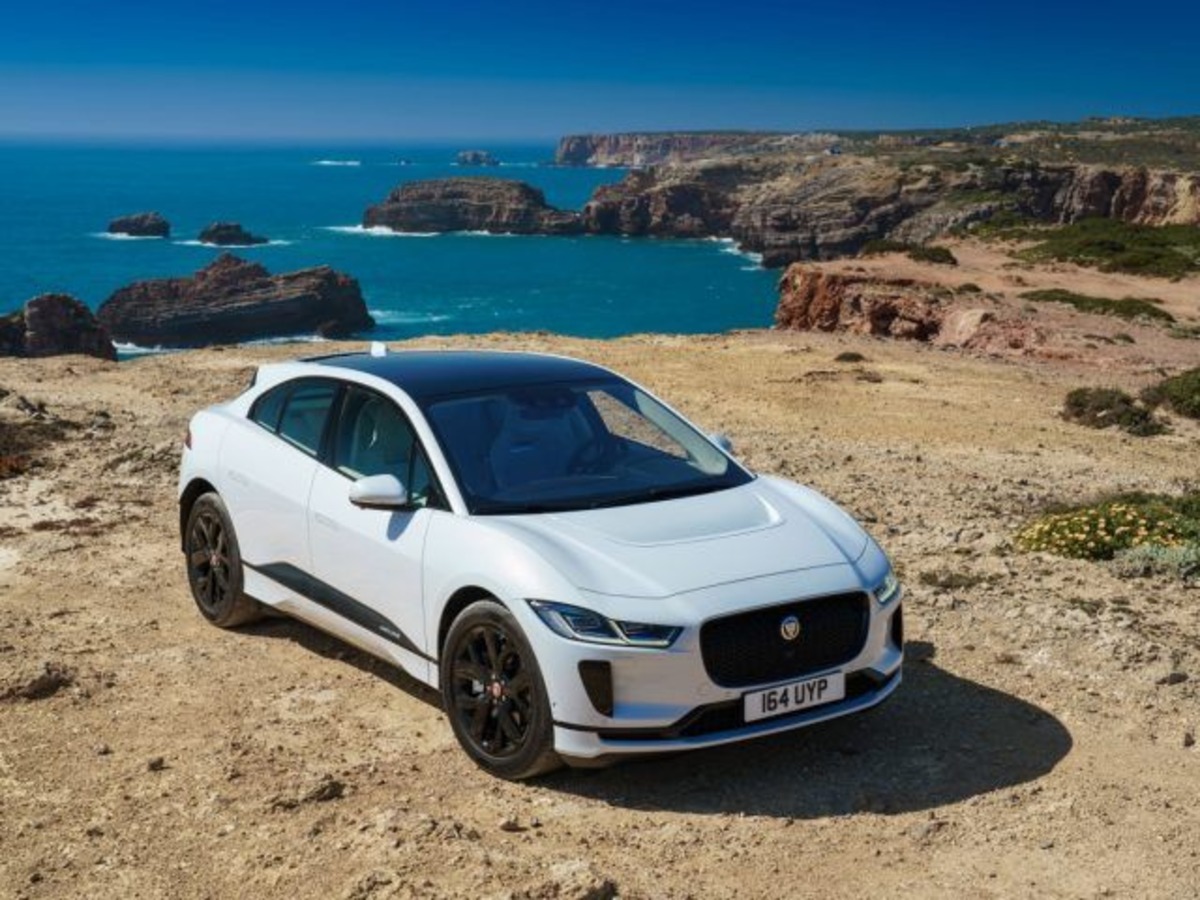
4. Jaguar I-PACE
The Jaguar I-PACE was lauded as a bold step forward when it debuted—an all-electric luxury SUV from one of Britain’s most iconic brands. It received critical acclaim, even scooping up multiple “Car of the Year” awards. However, these accolades didn’t translate into real-world success, especially in the resale department.
Within a few years of ownership, many I-PACEs lose over half their value, and the reasons are more than just skin deep. From reliability concerns to software hiccups and underwhelming real-world range, the I-PACE has failed to meet long-term expectations.
One of the I-PACE’s most glaring issues is its charging and range performance. While Jaguar advertised up to 234 miles of range, many owners report real-world figures significantly below that. Moreover, its DC fast-charging capabilities, while competitive on paper, don’t always deliver consistent performance.
As newer EVs like the Kia EV6 or Tesla Model Y offer faster charging, longer range, and better efficiency, the I-PACE begins to look less appealing, even as a luxury option. Used buyers are acutely aware of these comparisons and often choose competitors instead.
Software problems also plague the I-PACE’s resale value. Owners have frequently reported glitches with the infotainment system, navigation, and driver assistance features. Over-the-air updates—now considered standard for modern EVs—were only recently added, and Jaguar’s early software struggled with usability and speed.
For tech-savvy buyers, an outdated or buggy interface is a dealbreaker, particularly when purchasing a high-end used vehicle. The perception that the I-PACE is “tech-lagging” makes it a harder sell in the luxury EV segment.
The luxury SUV segment is especially brutal when it comes to resale value because expectations are sky-high. Jaguar’s limited dealer network, mixed reliability record, and the brand’s uncertain long-term electrification strategy only add to buyer skepticism.
Without strong brand loyalty like Porsche or infrastructure like Tesla, Jaguar struggles to maintain confidence in the I-PACE’s long-term viability. Even though it remains a handsome and capable vehicle, the secondary market treats it with caution, pushing resale prices down sharply.
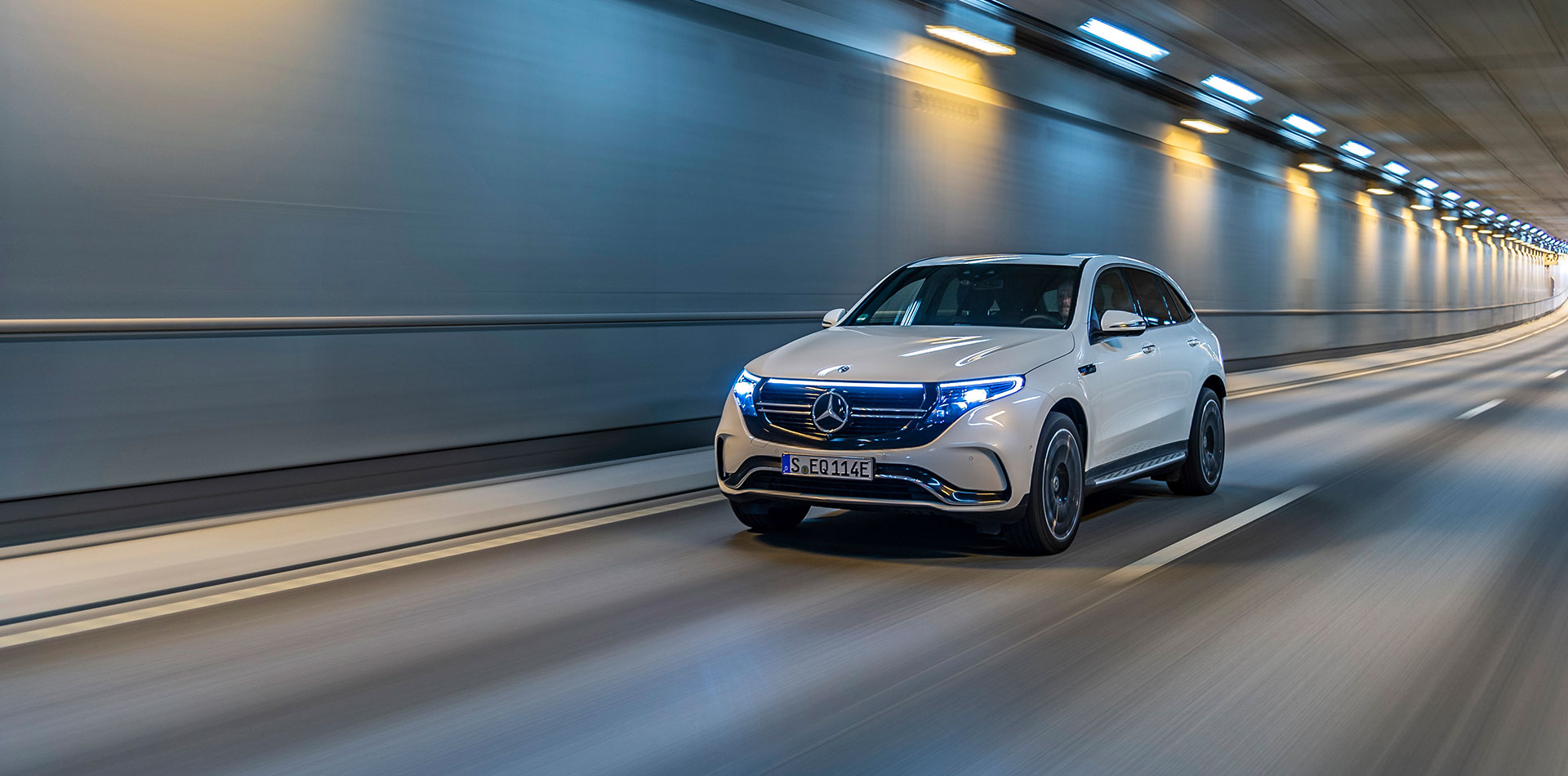
5. Mercedes-Benz EQC
The Mercedes-Benz EQC was supposed to mark a new era for the luxury automaker, introducing buyers to the three-pointed star’s vision of electric mobility. Instead, it quickly became an example of how not to transition into the EV space.
Built on a modified version of the GLC’s internal combustion platform, the EQC felt like a stopgap solution—an EV shoehorned into a gas-vehicle form. From launch, it was plagued by criticism over range, weight, interior compromises, and lack of innovation. In the used market, this reputation has stuck like glue.
Range is a huge issue for the EQC. With a modest EPA-estimated range of around 220 miles, it lags behind not only newer rivals but also several mid-market models that cost much less.
Given that range anxiety is still a top concern for used EV buyers, this shortfall is a serious limitation. Unlike the EQS or Tesla Model Y, the EQC doesn’t deliver the flexibility that buyers in this price bracket expect. As a result, many used shoppers simply overlook it in favor of more modern and efficient alternatives.
Another contributing factor is design compromise. Because it was based on an internal combustion platform, the EQC suffered from packaging issues, including a cramped interior and a high curb weight. These limitations directly impacted handling and efficiency, and for used buyers, that’s a red flag.
In the luxury space, expectations around refinement, space, and utility are high, and the EQC simply doesn’t measure up. Without any unique attributes to set it apart, it fades into the background—and so does its resale value.
Lastly, Mercedes didn’t give the EQC much long-term support. It was quietly shelved in several markets, and the company quickly shifted focus to its newer EVs built on the dedicated EVA platform, such as the EQS and EQE. This strategic pivot left EQC owners—and potential used buyers—feeling abandoned.
With fewer software updates, limited dealer enthusiasm, and weak aftermarket support, the EQC now sits at the bottom rung of used luxury EVs, shedding value rapidly as buyers look elsewhere for long-term confidence and performance.
Also Read: 5 Cars That Alert Owners Instantly and 5 That Say Nothing Until It’s Too Late
The used electric vehicle market is an evolving and sometimes unpredictable landscape, shaped by factors that extend well beyond traditional automotive depreciation norms. As we’ve explored, not all EVs are created equal when it comes to retaining value.
Some models have managed to hold their worth impressively, thanks to a combination of advanced technology, strong brand loyalty, solid range, and ongoing manufacturer support.
Others, despite initial promise or pioneering status, have lost substantial value, often due to rapid battery degradation, limited range, outdated charging standards, or poor consumer perception.
Understanding these factors is crucial for buyers and sellers alike. Strong value retention is often tied to a vehicle’s ability to remain relevant in terms of technology, performance, and usability.
Tesla’s Model 3, for example, continues to impress with its OTA software updates, robust Supercharger network, and consistently improving performance metrics, ensuring it remains competitive even years after purchase.
Similarly, vehicles like the Chevrolet Bolt and Hyundai Kona Electric offer practical range and reliability at an accessible price point, making them popular choices in the used EV market.
On the luxury end, Porsche’s Taycan and Ford’s Mustang Mach-E have successfully blended performance, technology, and brand appeal to maintain higher resale values, reflecting a broader trend where strong brand identity and real-world usability matter deeply.
Conversely, models that have dropped like rocks often share common traits: they suffer from limited battery range, outdated or incompatible charging infrastructure, poor build quality, or lack of manufacturer support. Early Nissan Leafs, the BMW i3, Fiat 500e, Jaguar I-PACE, and Mercedes-Benz EQC all illustrate how quickly market and technology shifts can erode value.
Whether it’s because of battery degradation concerns, insufficient range, or simply failing to meet modern buyer expectations, these vehicles face significant resale challenges. For many consumers, these issues translate to higher perceived risk and lower willingness to pay, causing steep depreciation.
The importance of value retention extends beyond pure economics. As EV adoption grows, the used EV market will play a pivotal role in democratizing electric mobility, making clean transportation accessible to broader audiences. Strong resale values encourage consumer confidence, promote vehicle longevity, and support healthy secondary markets.
Conversely, rapid depreciation can dissuade buyers and slow the transition to electric. Therefore, manufacturers, policymakers, and consumers must pay close attention to the factors that influence EV depreciation, from battery technology to charging infrastructure and beyond.
For prospective used EV buyers, this means doing careful research, assessing vehicle history, and considering not just the upfront price but the long-term cost of ownership.
Look beyond initial discounts and weigh factors like battery health, software support, and brand reputation. For sellers, understanding which vehicles maintain value can inform better timing and pricing strategies, maximizing return on investment.
In summary, the used EV landscape is a tale of two markets: those models that retain their value thanks to technology, practicality, and brand strength, and those that fall behind due to limitations and rapid technological change. Navigating this landscape wisely can unlock significant savings and ensure a satisfying ownership experience.
As electric vehicles become ever more mainstream, mastering the nuances of EV depreciation will become an indispensable skill for anyone participating in the automotive market, whether buying, selling, or simply staying informed.
